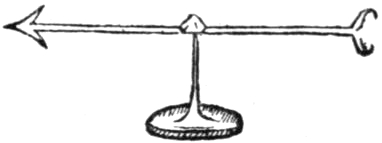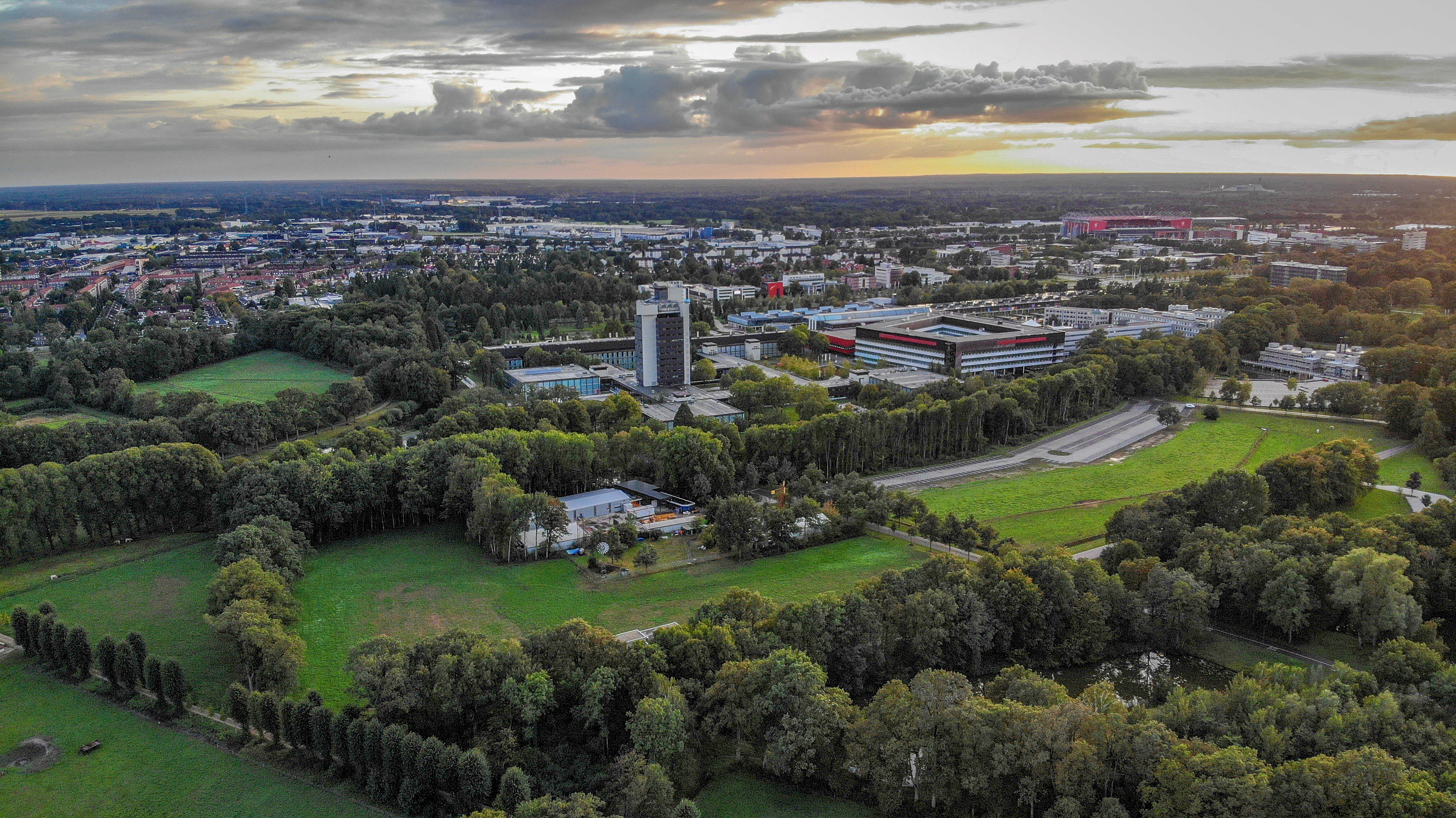|
Kelvin Water Dropper
The Kelvin water dropper, invented by Scottish scientist William Thomson (Lord Kelvin) in 1867, is a type of electrostatic generator. Kelvin referred to the device as his water-dropping condenser. The apparatus is variously called the Kelvin hydroelectric generator, the Kelvin electrostatic generator, or Lord Kelvin's thunderstorm. The device uses falling water to generate voltage differences by electrostatic induction occurring between interconnected, oppositely charged systems. This eventually leads to an electric arc discharging in the form of a spark. It is used in physics education to demonstrate the principles of electrostatics. Description A typical setup is shown in Fig. 1. A reservoir of water or other conducting liquid ''(top, grey)'' is connected to two hoses that release two falling streams of drops, which land in two buckets or containers ''(bottom, blue and red)''. Each stream passes (without touching) through a metal ring or open cylinder which is electricall ... [...More Info...] [...Related Items...] OR: [Wikipedia] [Google] [Baidu] |
William Thomson, 1st Baron Kelvin
William Thomson, 1st Baron Kelvin, (26 June 182417 December 1907) was a British mathematician, mathematical physicist and engineer born in Belfast. Professor of Natural Philosophy at the University of Glasgow for 53 years, he did important work in the mathematical analysis of electricity and formulation of the first and second laws of thermodynamics, and did much to unify the emerging discipline of physics in its contemporary form. He received the Royal Society's Copley Medal in 1883, was its president 1890–1895, and in 1892 was the first British scientist to be elevated to the House of Lords. Absolute temperatures are stated in units of kelvin in his honour. While the existence of a coldest possible temperature ( absolute zero) was known prior to his work, Kelvin is known for determining its correct value as approximately −273.15 degrees Celsius or −459.67 degrees Fahrenheit. The Joule–Thomson effect is also named in his honour. He worked closely with mathematics ... [...More Info...] [...Related Items...] OR: [Wikipedia] [Google] [Baidu] |
Electric Field
An electric field (sometimes E-field) is the physical field that surrounds electrically charged particles and exerts force on all other charged particles in the field, either attracting or repelling them. It also refers to the physical field for a system of charged particles. Electric fields originate from electric charges and time-varying electric currents. Electric fields and magnetic fields are both manifestations of the electromagnetic field, one of the four fundamental interactions (also called forces) of nature. Electric fields are important in many areas of physics, and are exploited in electrical technology. In atomic physics and chemistry, for instance, the electric field is the attractive force holding the atomic nucleus and electrons together in atoms. It is also the force responsible for chemical bonding between atoms that result in molecules. The electric field is defined as a vector field that associates to each point in space the electrostatic ( Coulomb) for ... [...More Info...] [...Related Items...] OR: [Wikipedia] [Google] [Baidu] |
Physics Experiments
Physics is the natural science that studies matter, its Elementary particle, fundamental constituents, its motion and behavior through Spacetime, space and time, and the related entities of energy and force. "Physical science is that department of knowledge which relates to the order of nature, or, in other words, to the regular succession of events." Physics is one of the most fundamental science, scientific disciplines, with its main goal being to understand how the universe behaves. "Physics is one of the most fundamental of the sciences. Scientists of all disciplines use the ideas of physics, including chemists who study the structure of molecules, paleontologists who try to reconstruct how dinosaurs walked, and climatologists who study how human activities affect the atmosphere and oceans. Physics is also the foundation of all engineering and technology. No engineer could design a flat-screen TV, an interplanetary spacecraft, or even a better mousetrap without first und ... [...More Info...] [...Related Items...] OR: [Wikipedia] [Google] [Baidu] |
Electrostatic Generators
Electrostatics is a branch of physics that studies electric charges at rest (static electricity). Since classical times, it has been known that some materials, such as amber, attract lightweight particles after rubbing. The Greek word for amber, (), was thus the source of the word 'electricity'. Electrostatic phenomena arise from the forces that electric charges exert on each other. Such forces are described by Coulomb's law. Even though electrostatically induced forces seem to be rather weak, some electrostatic forces are relatively large. The force between an electron and a proton, which together make up a hydrogen atom, is about 36 orders of magnitude stronger than the gravitational force acting between them. There are many examples of electrostatic phenomena, from those as simple as the attraction of plastic wrap to one's hand after it is removed from a package, to the apparently spontaneous explosion of grain silos, the damage of electronic components during manufacturin ... [...More Info...] [...Related Items...] OR: [Wikipedia] [Google] [Baidu] |
MIT OCW
MIT OpenCourseWare (MIT OCW) is an initiative of the Massachusetts Institute of Technology (MIT) to publish all of the educational materials from its undergraduate- and graduate-level courses online, freely and openly available to anyone, anywhere. The project was announced on April 4, 2001, and uses Creative Commons Attribution-NonCommercial-ShareAlike license. The program was originally funded by the William and Flora Hewlett Foundation, the Andrew W. Mellon Foundation, and MIT. Currently, MIT OpenCourseWare is supported by MIT, corporate underwriting, major gifts, and donations from site visitors. The initiative inspired a number of other institutions to make their course materials available as open educational resources. , over 2,400 courses were available online. While a few of these were limited to chronological reading lists and discussion topics, a majority provided homework problems and exams (often with solutions) and lecture notes. Some courses also included interact ... [...More Info...] [...Related Items...] OR: [Wikipedia] [Google] [Baidu] |
Taylor Cone
A Taylor cone refers to the cone observed in electrospinning, electrospraying and hydrodynamic spray processes from which a jet of charged particles emanates above a threshold voltage. Aside from electrospray ionization in mass spectrometry, the Taylor cone is important in field-emission electric propulsion (FEEP) and colloid thrusters used in fine control and high efficiency (low power) thrust of spacecraft. History This cone was described by Sir Geoffrey Ingram Taylor in 1964 before electrospray was "discovered". This work followed on the work of Zeleny who photographed a cone-jet of glycerine in a strong electric field and the work of several others: Wilson and Taylor (1925), Nolan (1926) and Macky (1931). Taylor was primarily interested in the behavior of water droplets in strong electric fields, such as in thunderstorms. Formation When a small volume of electrically conductive liquid is exposed to an electric field, the shape of liquid starts to deform from the shape ... [...More Info...] [...Related Items...] OR: [Wikipedia] [Google] [Baidu] |
De Magnete
''De Magnete, Magneticisque Corporibus, et de Magno Magnete Tellure'' (''On the Magnet and Magnetic Bodies, and on That Great Magnet the Earth'') is a scientific work published in 1600 by the English physician and scientist William Gilbert. A highly influential and successful book, it exerted an immediate influence on many contemporary writers, including Francis Godwin and Mark Ridley. Contents In ''De Magnete'', Gilbert described many of his experiments with his model Earth called the ''terrella''. Gilbert made the claim that gravity was due to the same force and he believed that this held the Moon in orbit around the Earth. The work then considered static electricity produced by amber. Amber is called ''elektron'' in Greek, and ''electrum'' in Latin, so Gilbert decided to refer to the phenomenon by the adjective ''electricus''. Summary ''De Magnete'' consists of six books. Book 1 Historical survey of magnetism and theory of Earth's magnetism. The lodestone in antiqui ... [...More Info...] [...Related Items...] OR: [Wikipedia] [Google] [Baidu] |
University Of Twente
The University of Twente (Dutch: ''Universiteit Twente''; , abbr. ) is a public technical university located in Enschede, Netherlands. The university has been placed in the top 170 universities in the world by multiple central ranking tables. In addition, the UT was ranked the best technical university in The Netherlands by Keuzegids Universiteiten, the most significant national university ranking. The UT collaborates with Delft University of Technology, Eindhoven University of Technology and the Wageningen University and Research Centre under the umbrella of 4TU and is also a partner in the European Consortium of Innovative Universities (ECIU). History The university was founded in 1961 as ''Technische Hogeschool Twente'' or ''(THT)''. After Delft University of Technology and Eindhoven University of Technology, it became the third polytechnic institute in the Netherlands to become a university. The institution was later renamed to Universiteit Twente (University of Twente) ... [...More Info...] [...Related Items...] OR: [Wikipedia] [Google] [Baidu] |
Van De Graaff Generator
A Van de Graaff generator is an electrostatic generator which uses a moving belt to accumulate electric charge on a hollow metal globe on the top of an insulated column, creating very high electric potentials. It produces very high voltage direct current (DC) electricity at low current levels. It was invented by American physicist Robert J. Van de Graaff in 1929. The potential difference achieved by modern Van de Graaff generators can be as much as 5 megavolts. A tabletop version can produce on the order of 100 kV and can store enough energy to produce visible electric sparks. Small Van de Graaff machines are produced for entertainment, and for physics education to teach electrostatics; larger ones are displayed in some science museums. The Van de Graaff generator was originally developed as a particle accelerator for physics research, as its high potential can be used to accelerate subatomic particles to great speeds in an evacuated tube. It was the most powerful type of accelera ... [...More Info...] [...Related Items...] OR: [Wikipedia] [Google] [Baidu] |
Faraday's Ice Pail Experiment
Faraday's ice pail experiment is a simple electrostatics experiment performed in 1843 by British scientist Michael Faraday that demonstrates the effect of electrostatic induction on a conducting container. For a container, Faraday used a metal pail made to hold ice, which gave the experiment its name.John Ambrose Fleming, The experiment shows that an electric charge enclosed inside a conducting shell induces an equal charge on the shell, and that in an electrically conducting body, the charge resides entirely on the surface. It also demonstrates the principles behind electromagnetic shielding such as employed in the ''Faraday cage''. The ice pail experiment was the first precise ''quantitative'' experiment on electrostatic charge. It is still used today in lecture demonstrations and physics laboratory courses to teach the principles of electrostatics. Description of experiment Faraday's description of the experiment, from a letter he wrote on February 4, 1843 to Richard Phill ... [...More Info...] [...Related Items...] OR: [Wikipedia] [Google] [Baidu] |
Hydroelectricity
Hydroelectricity, or hydroelectric power, is Electricity generation, electricity generated from hydropower (water power). Hydropower supplies one sixth of the world's electricity, almost 4500 TWh in 2020, which is more than all other Renewable energy, renewable sources combined and also more than nuclear power. Hydropower can provide large amounts of Low-carbon power, low-carbon electricity on demand, making it a key element for creating secure and clean electricity supply systems. A hydroelectric power station that has a dam and reservoir is a flexible source, since the amount of electricity produced can be increased or decreased in seconds or minutes in response to varying electricity demand. Once a hydroelectric complex is constructed, it produces no direct waste, and almost always emits considerably less greenhouse gas than fossil fuel-powered energy plants. [...More Info...] [...Related Items...] OR: [Wikipedia] [Google] [Baidu] |





